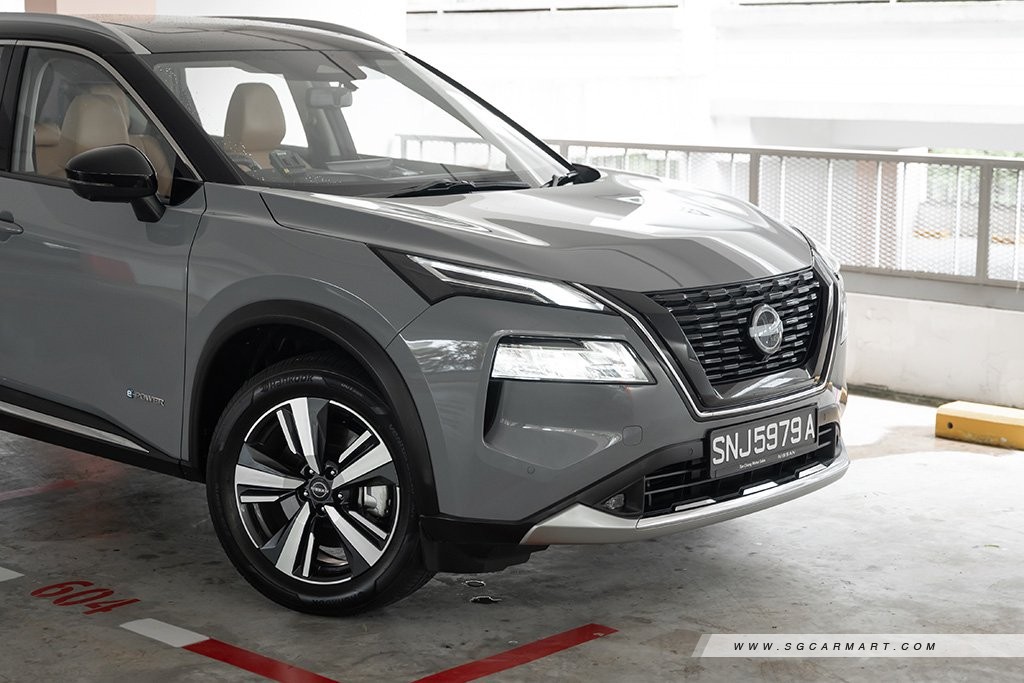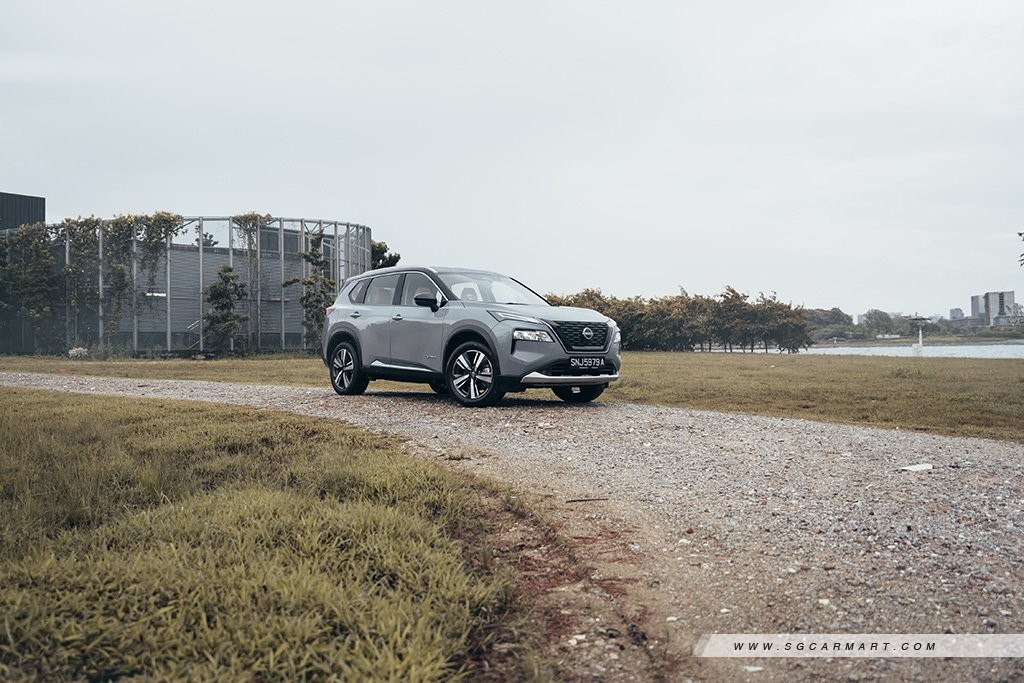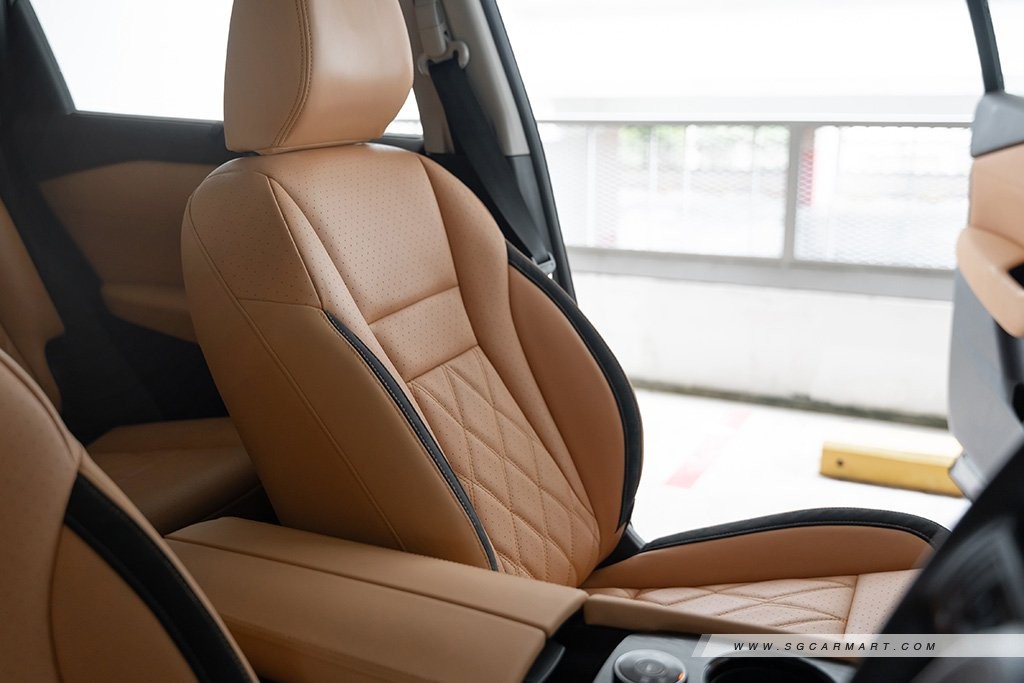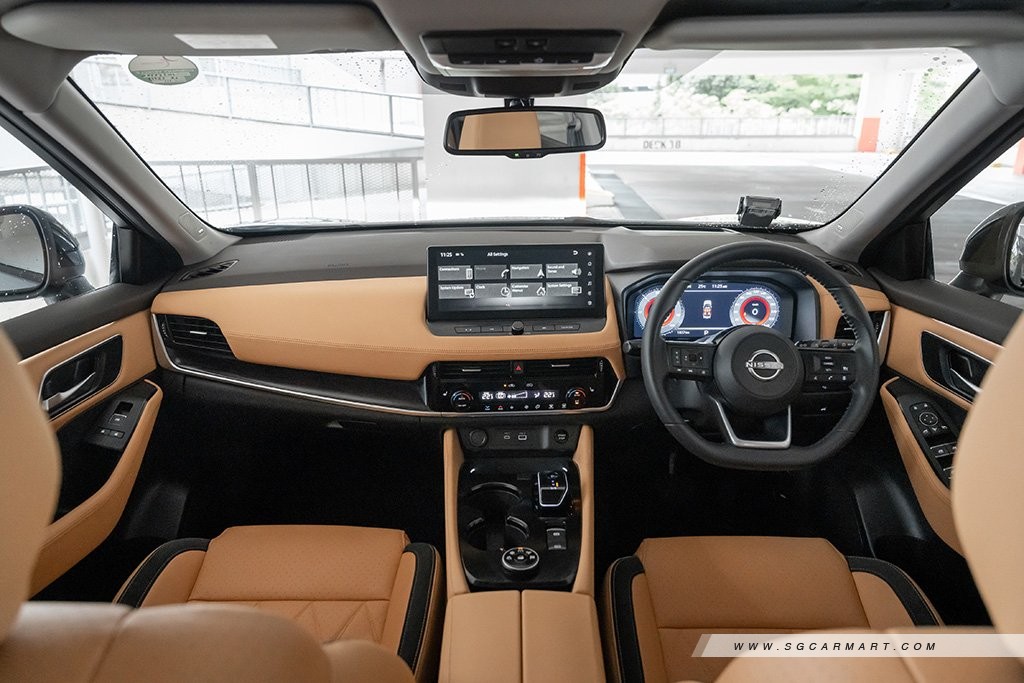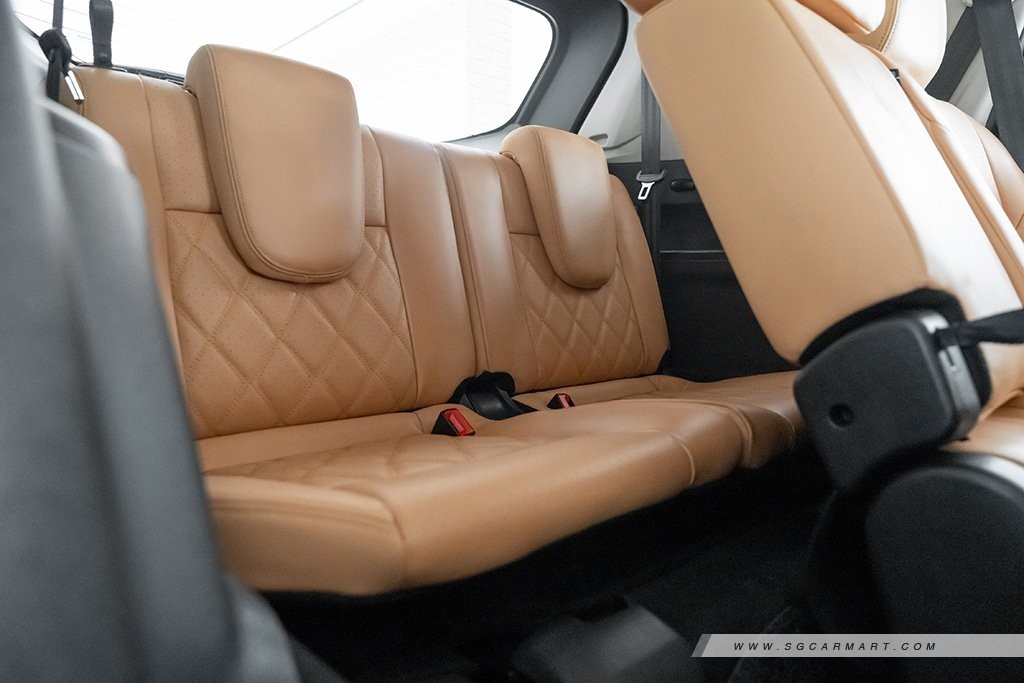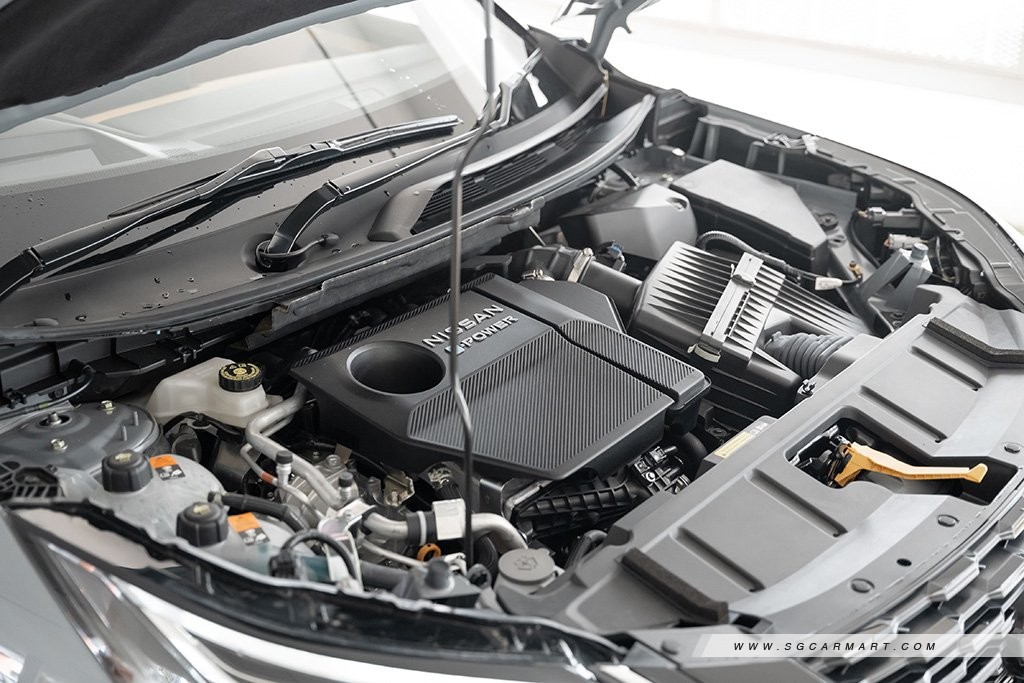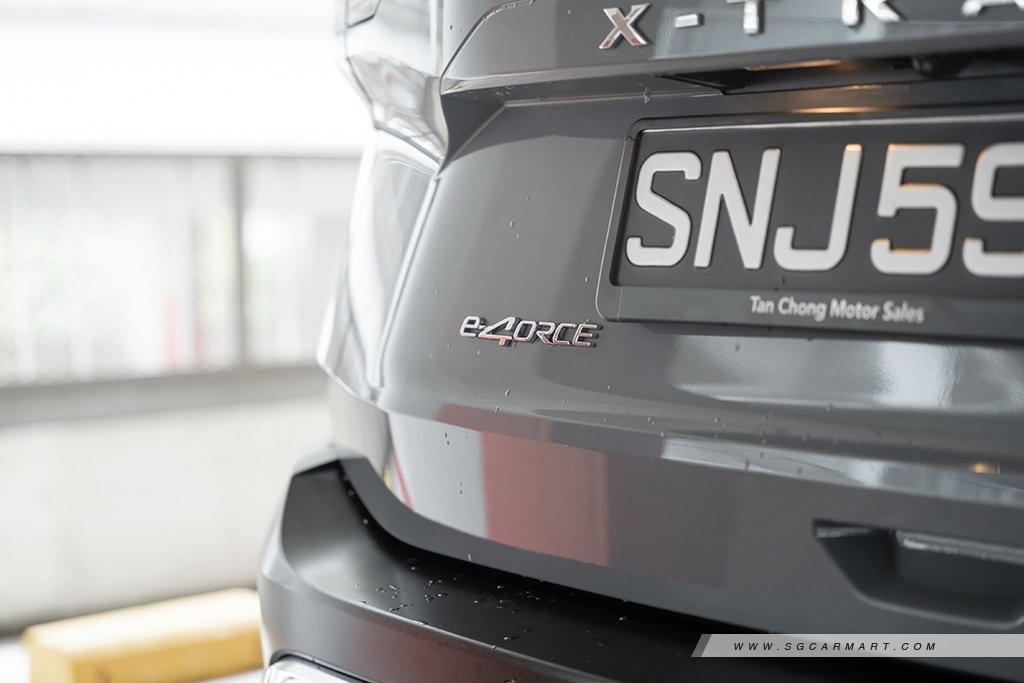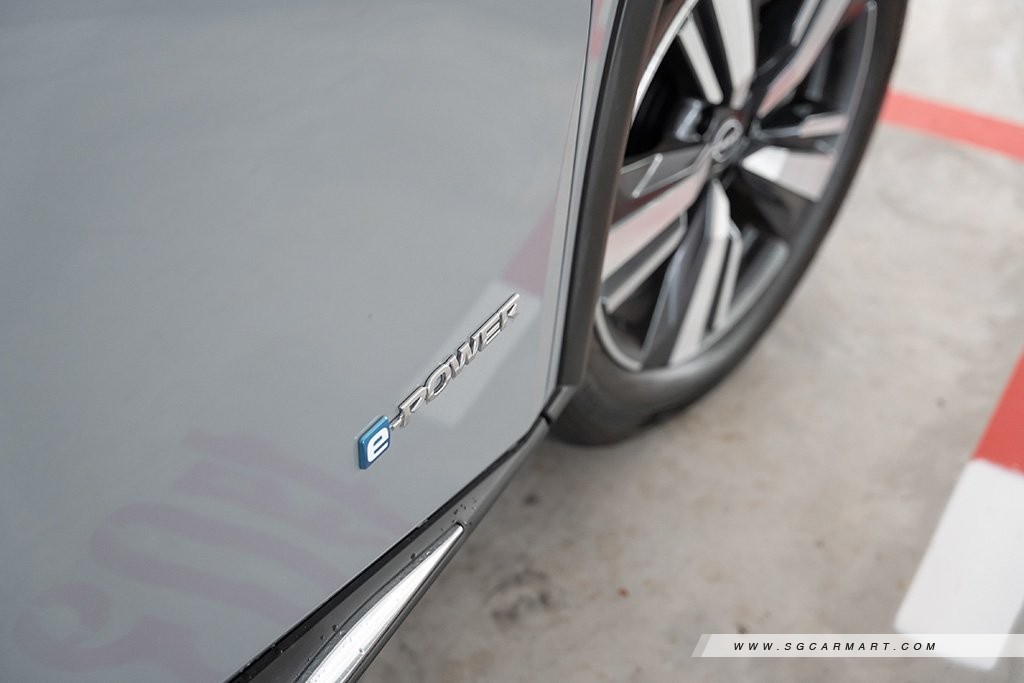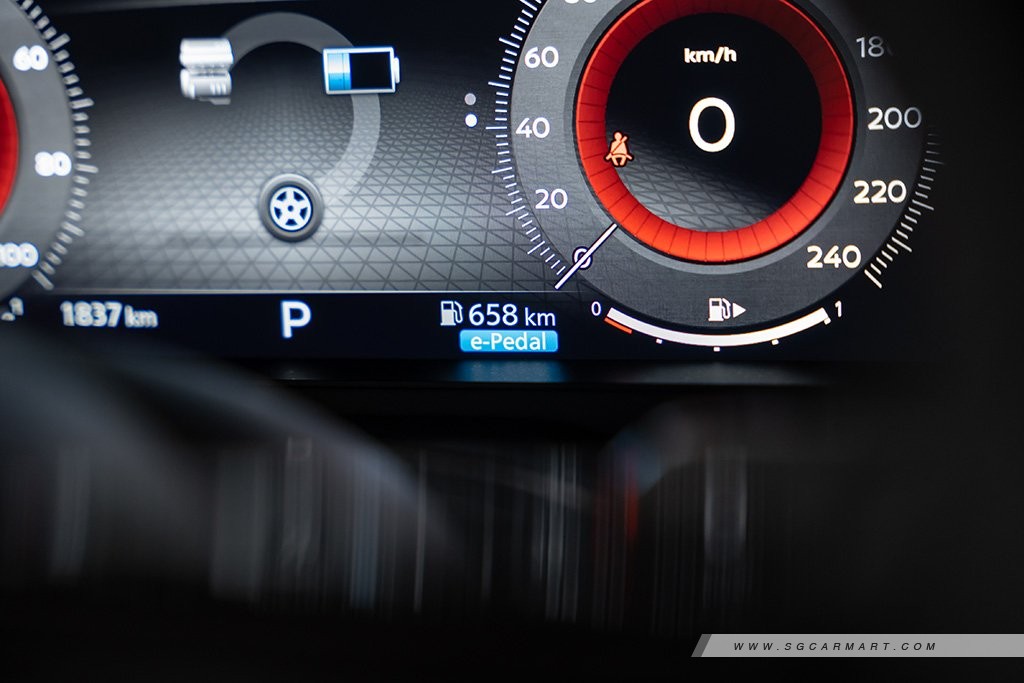Nissan X-Trail e-POWER e-4ORCE Hybrid (A) Review
22 May 2023|19,349 views
What We Like
Boldly designed, well equipped
Premium-feeling cabin
Respectable fuel consumption from hybrid drivetrain
Refined and comfortable to drive
Almost electrifying performance (by SUV standards) from dual electric motors
What We Dislike
Brakes could use a bit more bite
Not as fuel-efficient as hybrid competitors
Third row is still really just for kids
Pricey
Gazing upon the all new X-Trail e-POWER today, it's hard to believe that two generations ago, this was a boxy, more rugged machine that actually didn't look too uncomfortable with the suggestion of tackling a dirt road.
But the mention of two generations obscures the expanse of time that has passed in between - 13 years to be exact. Nissan's largest SUV on our shores has done a lot of growing up since then. Today, it's even fitted with a gleaming new hybrid drivetrain, and all of the latest tech from Japan.
Unmistakably the kingpin of the range
Apart from Nissan's now signature V-Motion grille, one is unlikely to draw a direct visual link between the fourth-generation X-Trail from its predecessor - and we mean that as a compliment.
The previous X-Trail was already praised for using softer edges and lines to evoke a more approachable image compared to the brawnier two-box SUVs the nameplate had, till then, long been associated with. In current form, the SUV now takes a different path that leans more again towards aggression, without it reaching all the way back for the traditional off-roader look.
Its rear, while neat-looking, is a more subdued affair, so most credit is due to its new face. Although the design decision to split a car's head lights has been a topic of particular controversy over the last couple of years, the X-Trail, with its blunter and taller nose, confidently pulls it off.
If you think that the car has more road presence before, its proportions also do not lie. With those massive wheel arches, 19-inch wheels, and copious amounts of plastic cladding still in tow, the X-Trail has physically grown in all directions, and is 40mm longer, 20mm wider, and just 10mm taller than before. Altogether, it looks like the rightful larger sibling to other crossovers in Nissan's range today, including the Qashqai and Kicks e-POWER.
From premium economy to business-class travel
On the inside, the X-Trail puts even more distance between itself and its forebears with a cabin that feels luxurious - even if you don't opt for the amber-coloured Nappa leather (a more than $2000 extra) seen on this test car.
Brushed surfaces and soft materials cover the areas most immediately seen and touched, and the dashboard is neatly laid out while retaining a good set of sensibly-labelled buttons. As standard, the car comes with tri-zone air-conditioning - separately for the two front occupants, and then the rear. I suspect the X-Trail driver might just come to enjoy erratic weather; those swivel knobs for adjusting temperature are superbly damped, and thus endlessly satisfying to use.
Naturally, helping the upmarket feel of the X-Trail's cabin is the wealth of newfound digital real estate.
Alongside a 10.8-inch head-up display, the car also gets twin 12.3-inch screens - one for the central infotainment screen and the other for the driver's instrument cluster, the latter of which contains exceptionally snazzy graphics. The native NissanConnect isn't the most foolproof infotainment system to get around, but this is easy to forgive, as wired Android Auto and wireless Apple CarPlay are supported.
As such, perhaps the only way in which the X-Trail remains stagnant is in terms of passenger-hauling.
To clarify first - fret not, as the car is still excellent at carrying five. Second-row passengers even have a larger panoramic sunroof over their heads, and retractable window shades at their disposal.
Still, despite its larger dimensions, the X-Trail's wheelbase remains untouched at 2,705mm. While Nissan doesn't disguise the fact that this is a 5+2 rather than full-fledged seven-seater, that does mean that while kids will be perfectly fine, the X-Trail's third row is still less suited to adult passengers. You'll want to keep that third row stowed away for belongings, too, since boot space is limited with all the seats popped up.
The power of electrification
If everything so far hasn't been sufficiently satisfying yet, there's more still. Above all, the headlining act of the latest X-Trail's festival of new goodies is its e-POWER hybrid drivetrain, which is in turn responsible for that 'e-4ORCE' badge you see stamped proudly onto its tailgate.
As a quick a refresher - and unlike other hybrids - Nissan's e-POWER models are never driven directly by combustion power. Instead, their petrol engines generate power for small on-board batteries, which, in turn, power electric motors that move the cars.
While this system is no longer new to us, the X-Trail's comes with its own bragging rights. It marks the first time a 1.5-litre turbocharged engine has been utilised (the Note, Kicks and Serena e-POWER all had 1.2-litre NA engines), and also boasts two electric motors - one on each axle - instead of just a single one on those earlier cars.
Noticing the benefits doesn't take too long. With its front motor capable of 150kW (201bhp) and 330Nm, and rear motor capable of 100kW (134bhp) and 195Nm, the X-Trail takes power and torque a few notches higher, with combined output now standing at 157kW (211bhp). (The figure is lower than the sum as the motors don't peak simultaneously.)
A claimed 7.2s century sprint feels absolutely commensurate to how it feels on the road. Initial take-offs catch you off guard with their silence, and the rush of torque is near instant.
Admittedly, a heavy right foot will still trigger the engine's drone as the entire system works hard to power those electric motors - but the driving experience is otherwise very quiet and relaxing because of how effortlessly the car gets up to speed.
But it's not just about sheer power.
Since everything is electronically controlled, Nissan says the X-Trail's e-4ORCE system can manage power delivery and braking to each individual wheel to give a driver more control - whether it's taking bends, or accelerating and decelerating with more gusto. It also means the X-Trail could technically do a bit of off-roading, since it offers 4WD (for those who have a fear of wet weather, there are 'Snow' and 'Offroad' drive modes).
We don't think B-roads, brake tests and hill climbs will ever be part of an X-Trail driver's day-to-day driving, and in Singapore, it's honestly difficult to prod at the exact limits of the system. Still, for something so tall and bulky, the car does demonstrate notable resistance to squat and dive, and remains commendably level at speed around windier paths.
What would have been welcome, however, are brakes with slightly more bite - to more confidently bring all 1.9 tonnes of this SUV to a stop. On this note too, the car's softer suspension also slightly undoes the heavylifting carried out by the electric drive system as you're coming to a halt.
While the car remains remarkably level through braking, it cannot shrug off the slightest forward-and-backward rocking just after stopping. The movement is never pronounced to the extent that it becomes grating - and your passengers certainly shouldn't mind, as they would have been won over by the X-Trail's overall refinement anyway - but it's also hard to ignore.
Since this is ultimately a hybrid, it'd be remiss not to point out that getting close to the official 14.9km/L consumption figure should not be difficult for less aggressive drivers; we were hovering over 14km/L before starting filming with the car. Having said that, this figure isn't outstanding today against other green rivals.
The case to be made: Premium or not?
Staring straight into the future with an extra pair of eyes now, the X-Trail (e-POWER e4ORCE - if we want to be proper) implores that you shed the image of its predecessors as mid-segment family cars and see it as a product perhaps deserving of a (slight) 'premium' label.
Like the Qashqai, it's clear the current generation no longer wants to just be respected for its utility. It also wants to straddle two worlds and occupy the expanding space between 'mass market' and 'upmarket', while offering its unique blend of style and tech its peers lack. e-4ORCE aside, few other hybrid rivals allow for near one-pedal driving.
How a driver responds to that call will likely determine the extent of the X-Trail's appeal. COE prices make it hard to objectively criticise the price point of any model in isolation now. But even compared to other seven-seater SUVs, hybrid SUVs, or SUVs that do both, the X-Trail is still asking for quite a fair bit of money.
On almost all counts, there is zero question that this is a vastly improved, very impressive car. Whether we're talking cabin design, raw performance, or driving refinement, the X-Trail easily matches, and even supersedes many of its peers.
The financial question, however? That's one that we truthfully (and unfortunately) don't know how to answer.
Interested in other hybrid SUVs? Here are a few other cars to consider!
The Hyundai Santa Fe Hybrid is an easy-going SUV that scores high on space, functionality and style
With high-tech assist sytems and a hybrid drivetrain, the Kia Sorento Hybrid offers everything - including a stress-free drive
The Toyota RAV4 Hybrid will appeal most strongly to those prioritising uncompromised uncomfort and cutting fuel consumption
See more of the e-POWER system at work in our video review as well!
What We Like
Boldly designed, well equipped
Premium-feeling cabin
Respectable fuel consumption from hybrid drivetrain
Refined and comfortable to drive
Almost electrifying performance (by SUV standards) from dual electric motors
What We Dislike
Brakes could use a bit more bite
Not as fuel-efficient as hybrid competitors
Third row is still really just for kids
Pricey
Gazing upon the all new X-Trail e-POWER today, it's hard to believe that two generations ago, this was a boxy, more rugged machine that actually didn't look too uncomfortable with the suggestion of tackling a dirt road.
But the mention of two generations obscures the expanse of time that has passed in between - 13 years to be exact. Nissan's largest SUV on our shores has done a lot of growing up since then. Today, it's even fitted with a gleaming new hybrid drivetrain, and all of the latest tech from Japan.
Unmistakably the kingpin of the range
Apart from Nissan's now signature V-Motion grille, one is unlikely to draw a direct visual link between the fourth-generation X-Trail from its predecessor - and we mean that as a compliment.
The previous X-Trail was already praised for using softer edges and lines to evoke a more approachable image compared to the brawnier two-box SUVs the nameplate had, till then, long been associated with. In current form, the SUV now takes a different path that leans more again towards aggression, without it reaching all the way back for the traditional off-roader look.
Its rear, while neat-looking, is a more subdued affair, so most credit is due to its new face. Although the design decision to split a car's head lights has been a topic of particular controversy over the last couple of years, the X-Trail, with its blunter and taller nose, confidently pulls it off.
If you think that the car has more road presence before, its proportions also do not lie. With those massive wheel arches, 19-inch wheels, and copious amounts of plastic cladding still in tow, the X-Trail has physically grown in all directions, and is 40mm longer, 20mm wider, and just 10mm taller than before. Altogether, it looks like the rightful larger sibling to other crossovers in Nissan's range today, including the Qashqai and Kicks e-POWER.
From premium economy to business-class travel
On the inside, the X-Trail puts even more distance between itself and its forebears with a cabin that feels luxurious - even if you don't opt for the amber-coloured Nappa leather (a more than $2000 extra) seen on this test car.
Brushed surfaces and soft materials cover the areas most immediately seen and touched, and the dashboard is neatly laid out while retaining a good set of sensibly-labelled buttons. As standard, the car comes with tri-zone air-conditioning - separately for the two front occupants, and then the rear. I suspect the X-Trail driver might just come to enjoy erratic weather; those swivel knobs for adjusting temperature are superbly damped, and thus endlessly satisfying to use.
Naturally, helping the upmarket feel of the X-Trail's cabin is the wealth of newfound digital real estate.
Alongside a 10.8-inch head-up display, the car also gets twin 12.3-inch screens - one for the central infotainment screen and the other for the driver's instrument cluster, the latter of which contains exceptionally snazzy graphics. The native NissanConnect isn't the most foolproof infotainment system to get around, but this is easy to forgive, as wired Android Auto and wireless Apple CarPlay are supported.
As such, perhaps the only way in which the X-Trail remains stagnant is in terms of passenger-hauling.
To clarify first - fret not, as the car is still excellent at carrying five. Second-row passengers even have a larger panoramic sunroof over their heads, and retractable window shades at their disposal.
Still, despite its larger dimensions, the X-Trail's wheelbase remains untouched at 2,705mm. While Nissan doesn't disguise the fact that this is a 5+2 rather than full-fledged seven-seater, that does mean that while kids will be perfectly fine, the X-Trail's third row is still less suited to adult passengers. You'll want to keep that third row stowed away for belongings, too, since boot space is limited with all the seats popped up.
The power of electrification
If everything so far hasn't been sufficiently satisfying yet, there's more still. Above all, the headlining act of the latest X-Trail's festival of new goodies is its e-POWER hybrid drivetrain, which is in turn responsible for that 'e-4ORCE' badge you see stamped proudly onto its tailgate.
As a quick a refresher - and unlike other hybrids - Nissan's e-POWER models are never driven directly by combustion power. Instead, their petrol engines generate power for small on-board batteries, which, in turn, power electric motors that move the cars.
While this system is no longer new to us, the X-Trail's comes with its own bragging rights. It marks the first time a 1.5-litre turbocharged engine has been utilised (the Note, Kicks and Serena e-POWER all had 1.2-litre NA engines), and also boasts two electric motors - one on each axle - instead of just a single one on those earlier cars.
Noticing the benefits doesn't take too long. With its front motor capable of 150kW (201bhp) and 330Nm, and rear motor capable of 100kW (134bhp) and 195Nm, the X-Trail takes power and torque a few notches higher, with combined output now standing at 157kW (211bhp). (The figure is lower than the sum as the motors don't peak simultaneously.)
A claimed 7.2s century sprint feels absolutely commensurate to how it feels on the road. Initial take-offs catch you off guard with their silence, and the rush of torque is near instant.
Admittedly, a heavy right foot will still trigger the engine's drone as the entire system works hard to power those electric motors - but the driving experience is otherwise very quiet and relaxing because of how effortlessly the car gets up to speed.
But it's not just about sheer power.
Since everything is electronically controlled, Nissan says the X-Trail's e-4ORCE system can manage power delivery and braking to each individual wheel to give a driver more control - whether it's taking bends, or accelerating and decelerating with more gusto. It also means the X-Trail could technically do a bit of off-roading, since it offers 4WD (for those who have a fear of wet weather, there are 'Snow' and 'Offroad' drive modes).
We don't think B-roads, brake tests and hill climbs will ever be part of an X-Trail driver's day-to-day driving, and in Singapore, it's honestly difficult to prod at the exact limits of the system. Still, for something so tall and bulky, the car does demonstrate notable resistance to squat and dive, and remains commendably level at speed around windier paths.
What would have been welcome, however, are brakes with slightly more bite - to more confidently bring all 1.9 tonnes of this SUV to a stop. On this note too, the car's softer suspension also slightly undoes the heavylifting carried out by the electric drive system as you're coming to a halt.
While the car remains remarkably level through braking, it cannot shrug off the slightest forward-and-backward rocking just after stopping. The movement is never pronounced to the extent that it becomes grating - and your passengers certainly shouldn't mind, as they would have been won over by the X-Trail's overall refinement anyway - but it's also hard to ignore.
Since this is ultimately a hybrid, it'd be remiss not to point out that getting close to the official 14.9km/L consumption figure should not be difficult for less aggressive drivers; we were hovering over 14km/L before starting filming with the car. Having said that, this figure isn't outstanding today against other green rivals.
The case to be made: Premium or not?
Staring straight into the future with an extra pair of eyes now, the X-Trail (e-POWER e4ORCE - if we want to be proper) implores that you shed the image of its predecessors as mid-segment family cars and see it as a product perhaps deserving of a (slight) 'premium' label.
Like the Qashqai, it's clear the current generation no longer wants to just be respected for its utility. It also wants to straddle two worlds and occupy the expanding space between 'mass market' and 'upmarket', while offering its unique blend of style and tech its peers lack. e-4ORCE aside, few other hybrid rivals allow for near one-pedal driving.
How a driver responds to that call will likely determine the extent of the X-Trail's appeal. COE prices make it hard to objectively criticise the price point of any model in isolation now. But even compared to other seven-seater SUVs, hybrid SUVs, or SUVs that do both, the X-Trail is still asking for quite a fair bit of money.
On almost all counts, there is zero question that this is a vastly improved, very impressive car. Whether we're talking cabin design, raw performance, or driving refinement, the X-Trail easily matches, and even supersedes many of its peers.
The financial question, however? That's one that we truthfully (and unfortunately) don't know how to answer.
Interested in other hybrid SUVs? Here are a few other cars to consider!
The Hyundai Santa Fe Hybrid is an easy-going SUV that scores high on space, functionality and style
With high-tech assist sytems and a hybrid drivetrain, the Kia Sorento Hybrid offers everything - including a stress-free drive
The Toyota RAV4 Hybrid will appeal most strongly to those prioritising uncompromised uncomfort and cutting fuel consumption
See more of the e-POWER system at work in our video review as well!
Car Information
Nissan X-Trail e-POWER e-4ORCE Hybrid Prestige [Single-Tone] (A)
$238,800
CAT B|Petrol-Electric|14.93km/L
Horsepower
157kW (211 bhp)
Torque
330 Nm
Acceleration
-
Promotion
Nissan CAT B, Car Expo Promotions!
Read moreThank You For Your Subscription.


















































